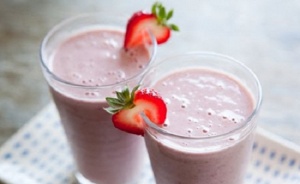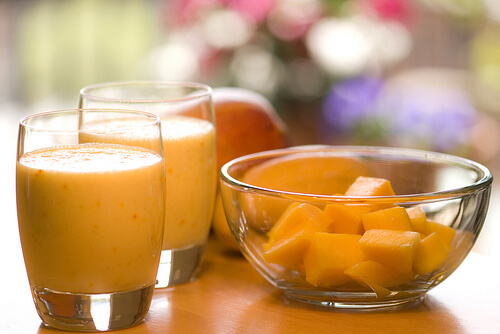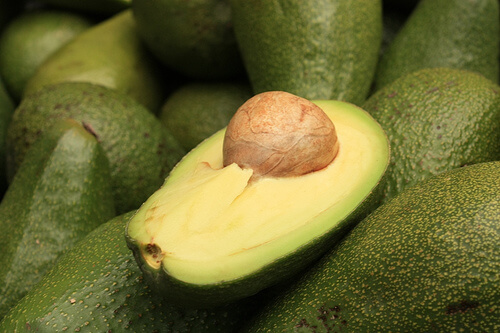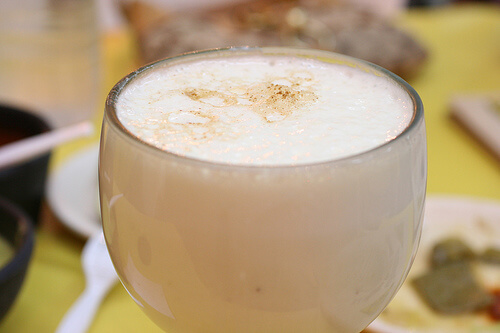Can a Smoothie Replace a Meal?

When you eat a balanced diet, you feel healthy, energized, and possibly even more positive. To achieve that, each meal needs to include essential nutrients. We know we’re supposed to eat fruits, vegetables, grains, beans, etc. But can a smoothie replace a meal while still giving us all the nutrients we need?
In this article we confirm that, yes, it’s possible and even beneficial for you to have a smoothie replace a meal once in a while. Additionally, we’ll give you some delicious recipes that prove that a it’s possible to have a smoothie replace a meal. Even further, these smoothies are good for weight loss, so they might also help you reach your optimal weight.
Also Read: Mint Tea – Great for Weight Loss
Benefits of smoothies
In general, when we talk about smoothies, we usually think of sweet dairy-based shakes (yogurt, milk, ice cream), which are high in calories and unhealthy. But a smoothie simply involves blending a group of foods together in a blender. You might be surprised by the variety of ingredients we present you in this article. Up next, we’ll explain some of the benefits of drinking these meal-replacement smoothies on a regular basis:
- They are easy to digest, which is especially beneficial for people who eat too fast or without chewing enough
- When you have a smoothie replace a meal, it’s easier to control your weight, as these can be appetite suppressants because they’re so filling
- The smoothies we present you here prevent or improve constipation due to their high fiber content.
- They’re good for cosmetic purposes, thanks to their vitamin and mineral content.
- If you have a smoothie replace a meal, this will help you avoid skipping meals, because these drinks are easy to have when you’re in a hurry.
- They do not contain lactose and some are gluten-free.
- The whole family can enjoy them.
- These are ideal for drinking before physical or mental exercise.
- They’re easy to prepare, and you’ll find that you can have a smoothie replace a meal any time of the year.
See Also: Perfect Recipes for People With Digestive Problems

What should a balanced diet contain?
To keep your appetite satisfied and suppress hunger soon after eating, you need to provide your body with the necessary amounts of nutrients in each meal. The following foods should be included in smoothies:
- Fruits and vegetables: raw and dried fruits, leafy greens
- Proteins: in this case, they will be of vegetable origin: nuts, cereals, avocados
- Starches or cereals: whole-grain products, bananas
- Healthy fats: oils of first cold press, nuts, avocados

Every smoothie you make should contain, to a greater or lesser extent, one of the ingredients from each of these categories. You can further adapt this list to your particular needs in terms of age, weight, daily routine, and the time of day.
Below are some different ways to combine these ingredients into a smoothie.
What ingredients do we use?
It’s best if you can use organic and seasonal foods to ensure maximum benefits. This will also ensure that you change up your smoothie routine so you don’t get bored of it.
We’ll need the following ingredients:
- Fruits: apples, pears, strawberries, papaya, pineapple, banana, avocado, etc.
- Leafy green vegetables: spinach, arugula, beet greens, lettuce
- Nuts: walnuts, hazelnuts, almonds, pine nuts
- Dried fruits: prunes, raisins, apricots, dates
- Vegetable oil (first cold press): olive, almond, sesame, sunflower, flax seed, wheat germ
- Vegetable drinks (oats, rice, buckwheat, almonds), natural fruit juice or water
- Optional sweetener: honey, agave nectar, brown sugar
- Food supplements: yeast, bee pollen, wheat germ, spirulina, wheat grass

Examples that show that a smoothie can replace a meal
Here we share some delicious and nutritionally comprehensive recipes for preparing smoothies:
- Green smoothie: avocado, baby spinach, ripe banana, and a rice drink
- Red smoothie: strawberries, cooked beets, raisins, macadamia nuts, sunflower oil and cranberry juice
- Orange smoothie: papaya, beet greens, pine nuts, dried apricots, almond oil, creamed oatmeal and wheat germ
- Yellow smoothie: pineapple, nuts, dates, sesame oil, apple juice and bee pollen
How to drink a smoothie?
Despite its liquid texture, a smoothie contains many ingredients. Some of these are raw and rich in fiber, so you should drink it slowly, tasting and almost chewing. This will make digestion and absorption easier, not to mention ensure that it’s as satisfying as possible.
In the mornings, you can treat yourself to a sweeter recipe that contains ripe fruits and natural sweeteners. These can give you energy and put you in good spirits. At night however, we recommend using more mild fruits like apples or pears, and adding more vegetables, which provide sedative benefits that induce rest, while also facilitating weight loss due to their lower calorie content.
All cited sources were thoroughly reviewed by our team to ensure their quality, reliability, currency, and validity. The bibliography of this article was considered reliable and of academic or scientific accuracy.
- Galvão Cândido Flávia, Silva Ton Winder Tadeu, Gonçalves Alfenas Rita de Cássia. Addition of dietary fiber sources to shakes reduces postprandial glycemia and alters food intake. Nutr. Hosp. [Internet]. 2015 Ene [citado 2018 Oct 26] ; 31( 1 ): 299-306. Disponible en: http://scielo.isciii.es/scielo.php?script=sci_arttext&pid=S0212-16112015000100031&lng=es. http://dx.doi.org/10.3305/nh.2015.31.1.7578.
- Izquierdo Hernández Amada, Armenteros Borrell Mercedes, Lancés Cotilla Luisa, Martín González Isabel. Alimentación saludable. Rev Cubana Enfermer [Internet]. 2004 Abr [citado 2018 Oct 26] ; 20( 1 ): 1-1. Disponible en: http://scielo.sld.cu/scielo.php?script=sci_arttext&pid=S0864-03192004000100012&lng=es.
- Meritxell Nus¹, Ruperto² Mar, Sánchez-Muniz¹ Francisco J.. Frutos secos y riesgo cardio y cerebrovascular. Una perspectiva española. ALAN [Internet]. 2004 Jun [citado 2018 Oct 26] ; 54( 2 ): 137-148. Disponible en: http://www.scielo.org.ve/scielo.php?script=sci_arttext&pid=S0004-06222004000200002&lng=es.
This text is provided for informational purposes only and does not replace consultation with a professional. If in doubt, consult your specialist.








